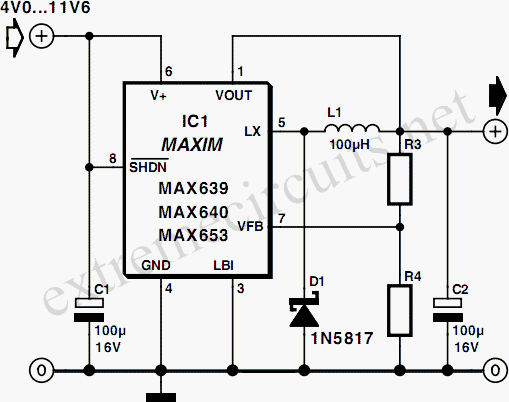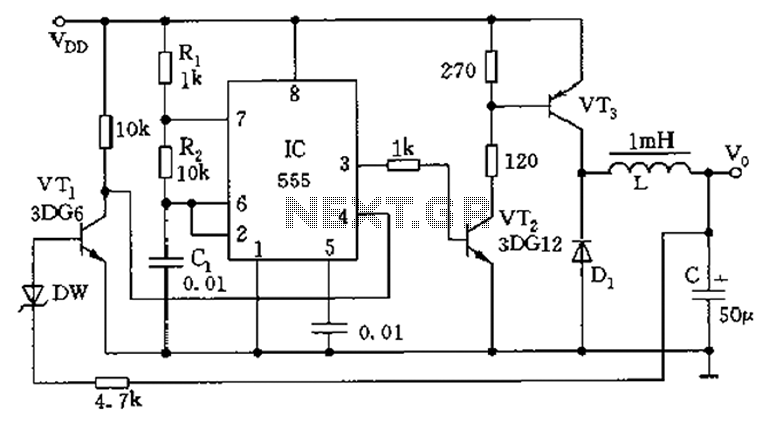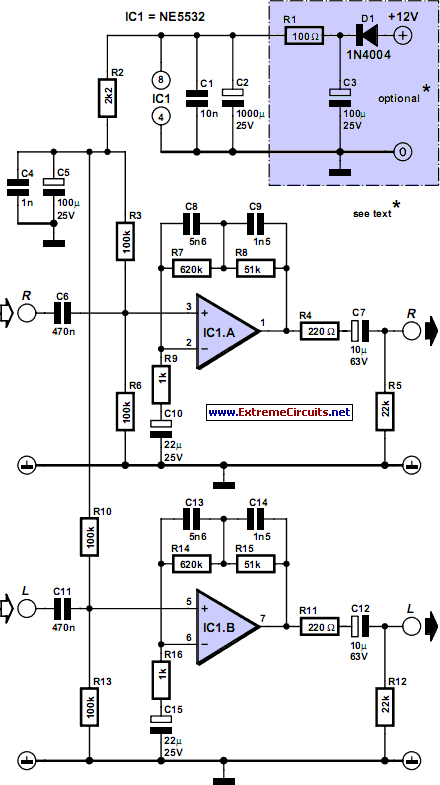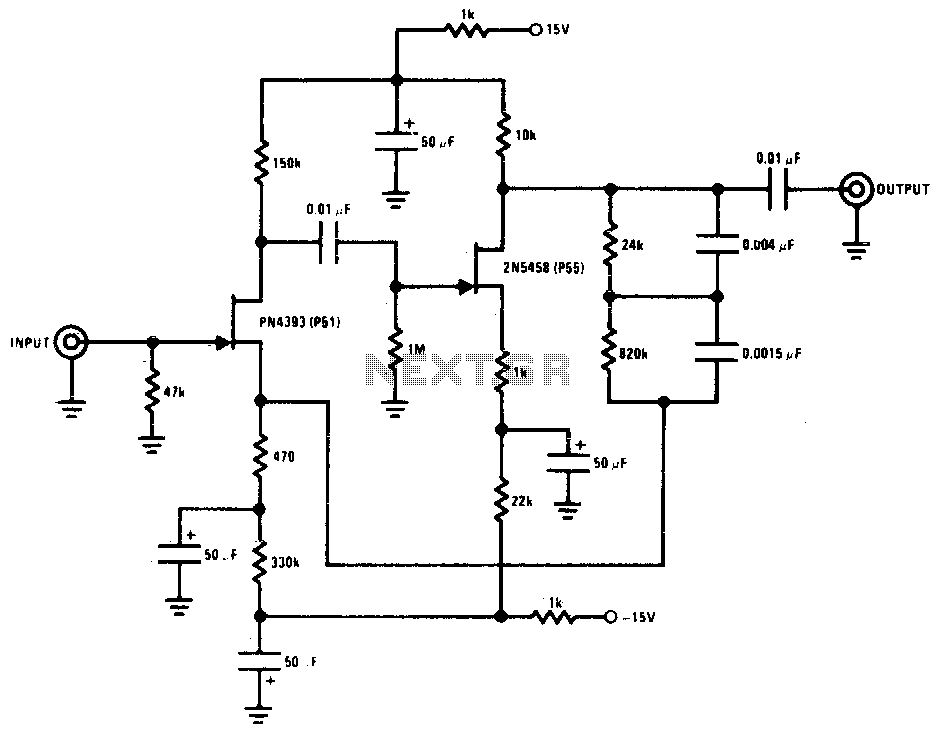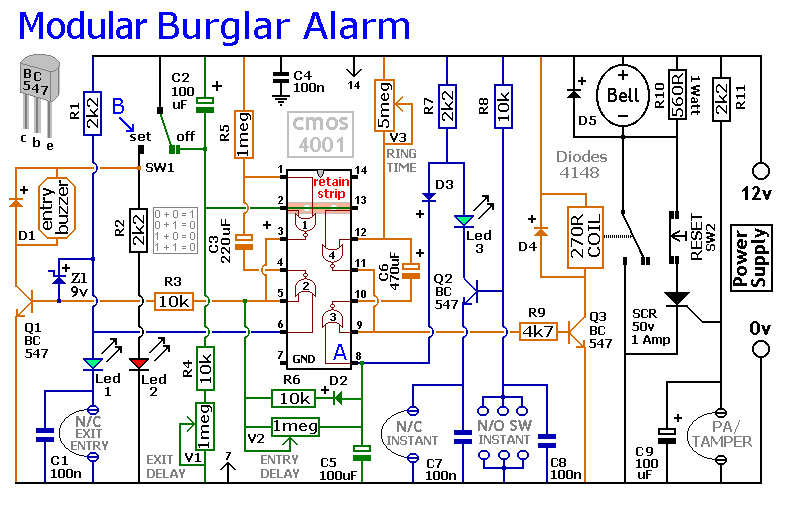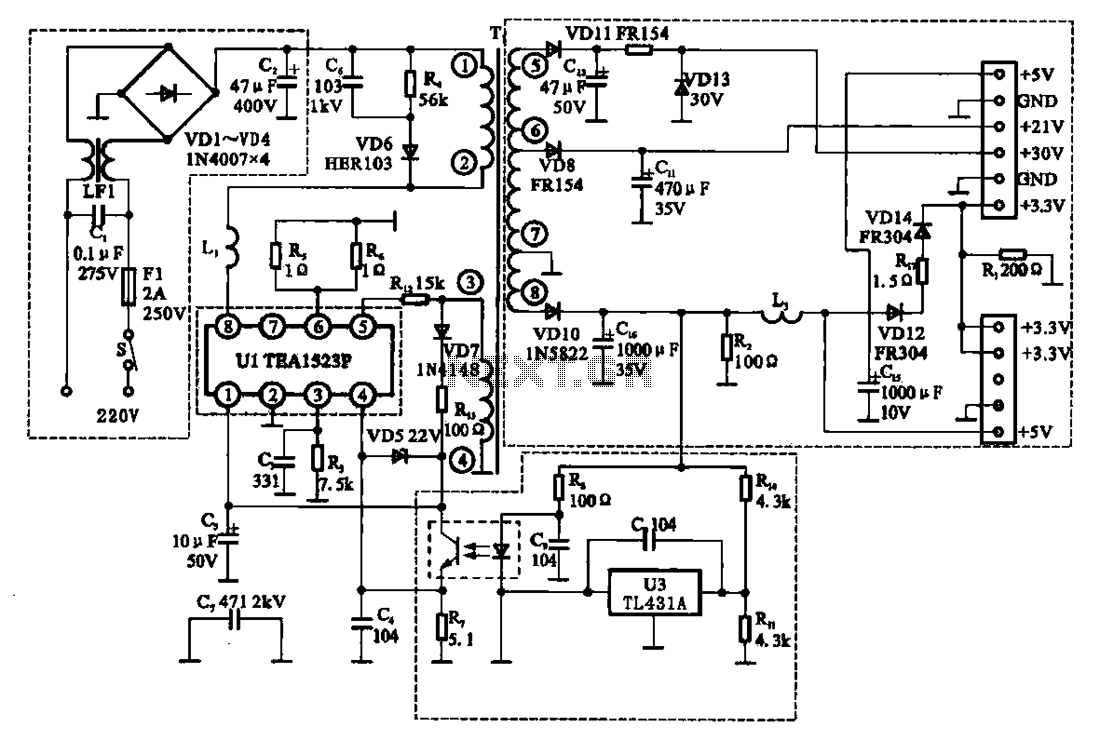
Modular Preamplifier Switching Center
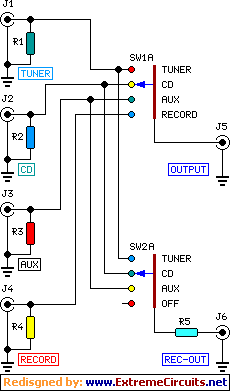
This module is an essential addition to the Modular Preamplifier Control Center when more than two sources need to be connected to the preamplifier chain. Four high-level inputs can be selected using SW1 and routed to the output. The output of this module must be connected via a suitable cable to one of the two inputs of the Control Center. This configuration allows a total of five inputs to be accessible to the user of this module combination. The Switching Control also features the "Double Bar," which enables the routing of an input signal to an external unit, such as a recorder (tape or digital), that is different from the signal currently being reproduced by the amplifier. For instance, it is possible to listen to a CD while the signal from a radio station is routed to the recorder. This selection is managed through SW2. As with other modules in this series, each electronic board can be housed in a standard enclosure; Hammond extruded aluminum cases are particularly suitable for accommodating the boards of this preamp. Specifically, cases measuring 16 x 10.3 x 5.3 cm or 22 x 10.3 x 5.3 cm provide an aesthetically pleasing appearance when stacked. An example of the potential arrangement of the front and rear panels of this module is provided below.
The module described serves as a versatile input selector for a Modular Preamplifier Control Center, expanding its functionality by allowing multiple audio sources to be connected simultaneously. The four high-level inputs facilitate the connection of various audio devices, and the user can conveniently select the desired input using the switch SW1. The output from this module must be connected to one of the two designated inputs on the Control Center, ensuring that the selected audio source can be processed by the preamplifier.
In addition to the basic input selection, the module incorporates a feature known as the "Double Bar," which enhances its utility by enabling the simultaneous routing of different audio signals to an external recording device. This allows for greater flexibility in audio management, as users can listen to one source—such as a CD—while recording another, such as a radio broadcast. The selection of the external output is controlled via switch SW2, providing an intuitive interface for users to manage their audio sources effectively.
The module's design is compatible with standard enclosures, with Hammond extruded aluminum cases being recommended for housing the electronic boards. The specified dimensions of 16 x 10.3 x 5.3 cm or 22 x 10.3 x 5.3 cm not only accommodate the boards but also ensure a professional appearance when multiple units are stacked together. This modular approach to audio management provides users with a customizable and efficient solution for their preamplification needs.This module can be a necessary addition to the Modular Preamplifier Control Center when more than two sources need to be connected to the preamplifier chain. Four high level inputs can be selected by means of SW1 and routed to the output. The output of this module must be connected by a suitable cable to one of the two inputs of the Control Center
module. In this way, a total of five inputs will be available to the user of this module combination. The Switching Control features also the so called "Double Bar", i. e. the possibility of routing to an external unit, e. g. a recorder (tape or digital) an input signal different from that reproduced at the time by the amplifier. For example, you can listen in to a CD whereas the signal coming from a radio station through the Tuner is routed to the recorder.
This selection is operated by means of SW2. As with the other modules of this series, each electronic board can be fitted into a standard enclosure: Hammond extruded aluminum cases are well suited to host the boards of this preamp. In particular, the cases sized 16 x 10. 3 x 5. 3 cm or 22 x 10. 3 x 5. 3 cm have a very good look when stacked. See below an example of the possible arrangement of the front and rear panels of this module. 🔗 External reference
The module described serves as a versatile input selector for a Modular Preamplifier Control Center, expanding its functionality by allowing multiple audio sources to be connected simultaneously. The four high-level inputs facilitate the connection of various audio devices, and the user can conveniently select the desired input using the switch SW1. The output from this module must be connected to one of the two designated inputs on the Control Center, ensuring that the selected audio source can be processed by the preamplifier.
In addition to the basic input selection, the module incorporates a feature known as the "Double Bar," which enhances its utility by enabling the simultaneous routing of different audio signals to an external recording device. This allows for greater flexibility in audio management, as users can listen to one source—such as a CD—while recording another, such as a radio broadcast. The selection of the external output is controlled via switch SW2, providing an intuitive interface for users to manage their audio sources effectively.
The module's design is compatible with standard enclosures, with Hammond extruded aluminum cases being recommended for housing the electronic boards. The specified dimensions of 16 x 10.3 x 5.3 cm or 22 x 10.3 x 5.3 cm not only accommodate the boards but also ensure a professional appearance when multiple units are stacked together. This modular approach to audio management provides users with a customizable and efficient solution for their preamplification needs.This module can be a necessary addition to the Modular Preamplifier Control Center when more than two sources need to be connected to the preamplifier chain. Four high level inputs can be selected by means of SW1 and routed to the output. The output of this module must be connected by a suitable cable to one of the two inputs of the Control Center
module. In this way, a total of five inputs will be available to the user of this module combination. The Switching Control features also the so called "Double Bar", i. e. the possibility of routing to an external unit, e. g. a recorder (tape or digital) an input signal different from that reproduced at the time by the amplifier. For example, you can listen in to a CD whereas the signal coming from a radio station through the Tuner is routed to the recorder.
This selection is operated by means of SW2. As with the other modules of this series, each electronic board can be fitted into a standard enclosure: Hammond extruded aluminum cases are well suited to host the boards of this preamp. In particular, the cases sized 16 x 10. 3 x 5. 3 cm or 22 x 10. 3 x 5. 3 cm have a very good look when stacked. See below an example of the possible arrangement of the front and rear panels of this module. 🔗 External reference
